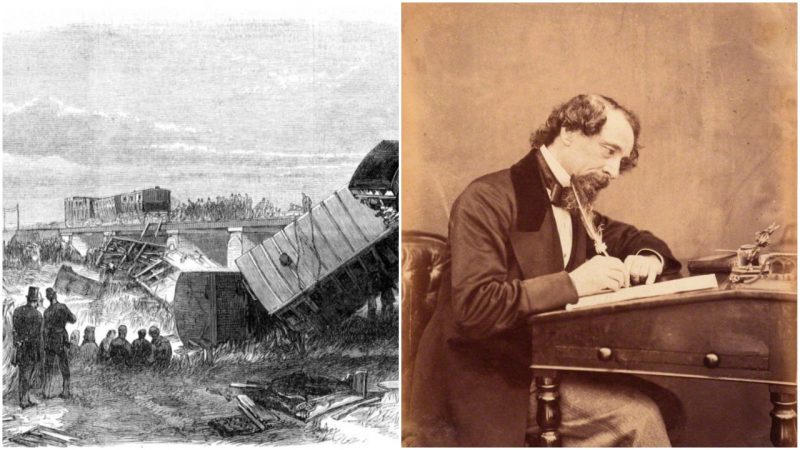Charles Dickens was the greatest and the most prolific English writer of the Victorian era. His novels and short stories are known for their social criticism, and their popularity is still on the rise today.
While writing his final novel Our Mutual Friend, which is widely regarded as his most sophisticated work, Dickens survived a horrible railroad accident.
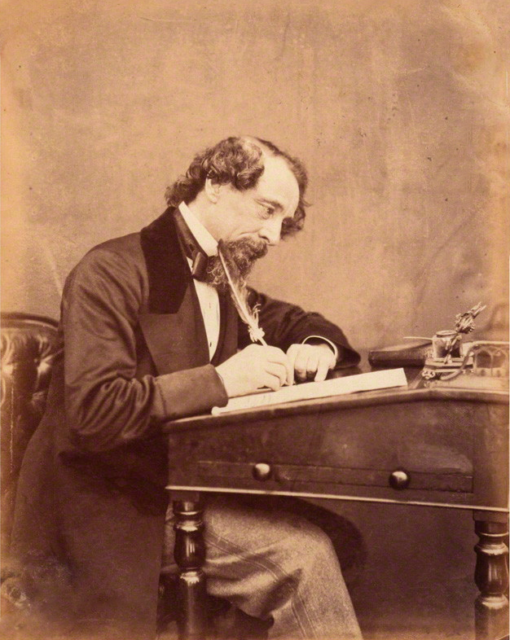
On the morning of 9 June 1865, Dickens was traveling from Folkstone to London with his mistress Ellen Ternan and her mother Frances. Ellen was one of the actors whom Dickens hired for the play The Frozen Deep, which he co-wrote with Wilkie Collins. Dickens’ wife Catherine Hogarth Dickens was never aware of his secret relationship with Ellen, which lasted until his death.
The train in which they were traveling carried 115 passengers. Near the village of Staplehurst in Kent, the railroad tracks had been severely damaged, so they were removed for maintenance. At the time, the rule was that in such an event a man waving a red flag should be placed a mile before the gap in the tracks so that the train could stop in time. However, at Staplehurst, the man stood just half a mile before the tracks and the train failed to stop in time.
The train was derailed while approaching a cast iron bridge along which the damaged tracks had been removed, and most of the train’s cars fell into the muddy river. The only first class carriage that remained undamaged was the one in which Dickens traveled with Ellen and Frances.
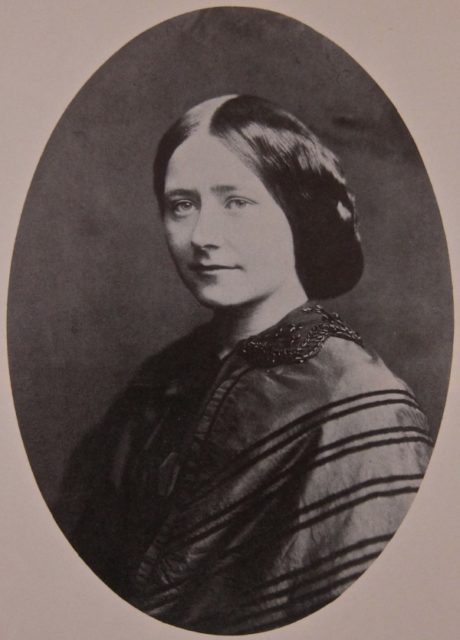
Ten passengers were killed immediately, and 40 were severely injured. Dickens rushed to help the injured passengers, and a few of them died in his arms. Before he left the scene, he returned to the carriage he had been traveling in to retrieve the unfinished manuscript of Our Mutual Friend.
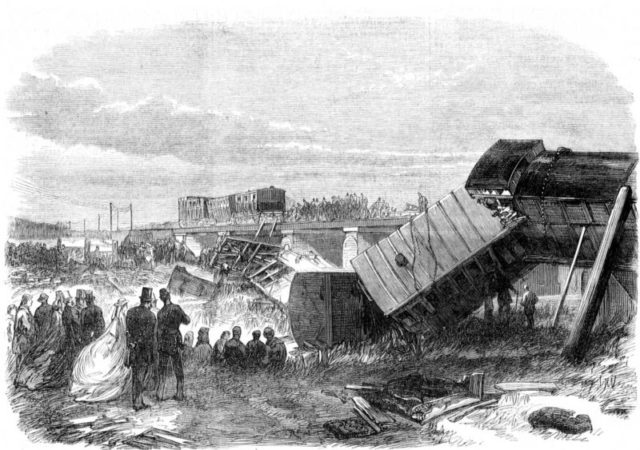
An inquest was organized a week later to determine the cause of the accident, and all passengers were supposed to attend it. However, Dickens decided not to attend, because he would have to reveal that he was traveling with his mistress and her mother. Still, the authorities officially thanked him for his assistance in tending the injured by giving him a piece of plate retrieved from the wrecked train.
Dickens was greatly affected by the horrible tragedy he witnessed, and the accident inspired him to write a short story named “The Signal Man”. For the rest of his life, he avoided traveling by train whenever other means of transport were available.
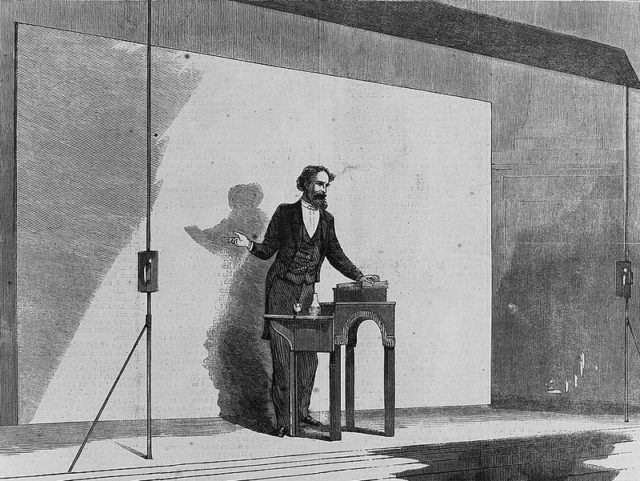
The Staplehurst railroad accident was an important point in Dickens’ later years, as he retired from writing after finishing Our Mutual Friend.
His death devastated thousands of his fans all over the world, and it was marked by an eerie coincidence: Dickens died on 9 June 1870, exactly five years after the railroad accident occurred.
